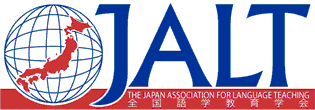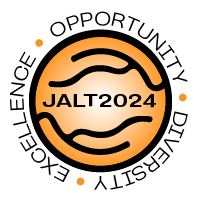14 April, 2012 - Craig Lambert
Task repetition and fluency development in the Japan classes: How much is enough?
Craig Lambert
From common notions of second language fluency to the basis for high-stakes decisions about it (recommendations for jobs or Phds.), Lambert walked us through some of the history of the various theories and methodologies that have been developed to define and propagate the teaching of conversation and discussed pros and cons of popular ways to teach it, from the Structural Approach in the 1950s to the Communicative Approach popular since the ‘80s. He pointed out how language which is acceptable and understandable among family or friends is not good enough for the workplace or school, and that students need to know this. In order to focus Communicative Language Teaching to promote second language development there are many advantages to task-based learning, such as the focus on actual communication, meaningful outcomes and connections to future needs—although it requires an egalitarian value system often found to be at odds with Asian classroom values. Finally, Lambert showed us a Fluency Module, to facilitate the putting into practice of these previously presented ideas for teaching fluency.
Link to meeting listing

